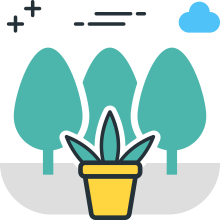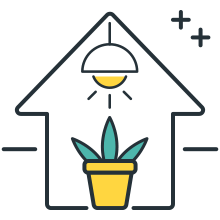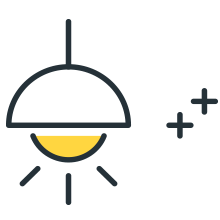Energy Efficient Grower’s Guide

Vermont Law
Understanding Act 86
With the passage of Act 86 in Vermont, Burlington Electric Department expects increased energy demands due to personal cultivation of cannabis. The full text of the bill provides current regulatory requirements for both indoor and outdoor growing.
The current legal cultivation limit per dwelling unit is 2 mature plants and 4 immature plants. Medicinal growers may have higher limits.
Growing your own cannabis requires many considerations, and some choices can significantly impact your energy bills. If growers keep energy efficiency in mind, they can keep the energy costs of growing lower.
Growing Outdoors

Growing outdoors in summer is the best sustainability strategy for cultivating cannabis, especially when growing strains that mature quickly. Be sure to review the requirements of Act 86 before growing outdoors.
Sunlight is the best light! Before growing indoors, try an outdoor season and store your harvest in an air-tight container in a dark location at temperatures <68 ˚ F and 55 – 62% relative humidity.
Growing Indoors

If outdoor growing is not an option for you, review the typical energy use types listed on the right, and decide what your grow room needs.
Artificial lighting and supplemental HVAC are the primary energy-using systems in an indoor grow. Select your equipment wisely!
LED Lighting

LED lighting manufacturers are producing high-quality grow lights that can provide harvests of the same quality and yield as traditional lighting options at half the wattage.
Using LEDs may reduce your need for air conditioning. Be sure to check manufacturer specification sheets for proof of safety testing and warranties to ensure product safety and durability.
Automate Your Grow

Use timers and sensors to automatically enable and disable equipment as it is needed, saving time and energy. Sensors also allow you to monitor grow conditions and calibrate settings such as light output and space temperature to optimize harvest quality.
Potential Energy Impacts
If an indoor grow is necessary, consider the major energy use types for cannabis cultivation.
- Lighting
- Heat & AC
- Ventilation
- Automation
- Dehumidification

The current legal cultivation limit per dwelling unit is 2 mature plants and 4 immature plants. Medicinal growers may have higher limits. Growers cultivating the current legal limit of plants could expect the following estimated monthly electricity bill.
| Lighting* | HVAC | |
|---|---|---|
| Best Case | $40-80 | $12 |
| Worst Case | $85-170 | $35 |
*Lighting energy costs estimated for one or two 1000W high pressure sodium vs. 600W LED grow lights. The “Best Case” example does not include air conditioning.
Cannabis Growth Stages & Indoor Characteristics
Burlington Electric Department encourages growers to use LED.
| Clone | Veg | Flower | |
|---|---|---|---|
| Cycle Duration | 1-2 weeks | 2-5 weeks | 8-12 weeks |
| Lighting Type | LED, CFL, T5 | LED, CMH, MH, T5 | LED, CMH, HPS |
| On Hours | 24 | 18-24 | 12 |
| PPFD, μmol/m2/s | 75-150 | 300-600 | 600+ |
| Airflow | Some | Yes | Yes |
| Relative Humidity | 60-80% | 55-75% | 50-60% |
| CO2 Level, ppm | 400 | 400-800 | 800-1400 |
| Space Temp. | 72-80ºF | 74-84ºF | 68-84ºF |
Source: Fluence Bioengineering High PPFD Cultivation Guide
 Want to dig deeper and keep your grow bills low?
Want to dig deeper and keep your grow bills low?
Contact Energy Services to get help choosing equipment, locating knowledgeable professionals, and analyzing energy usage to understand your electric bills. Burlington Electric Department has contracted with Efficiency Vermont to administer rebates for LED grow lights.
